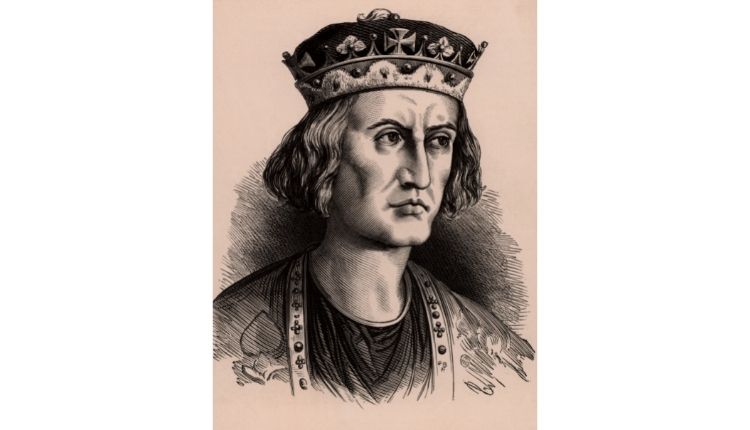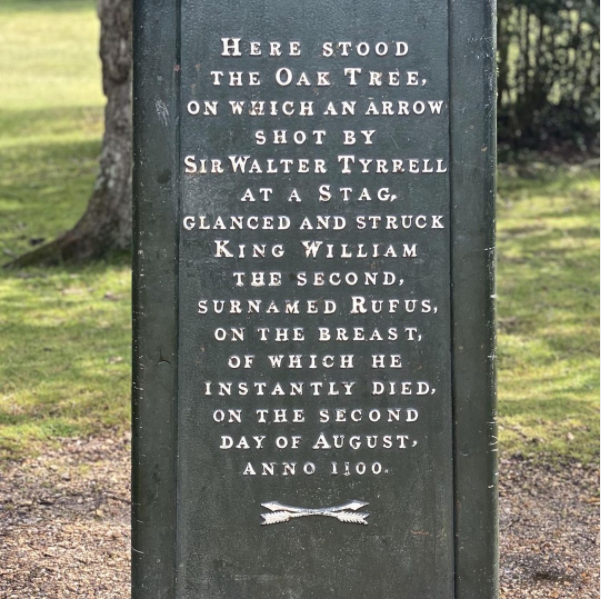
Over a span of 1200 years, there have been over 50 monarchs of England. In our previous post we delved into the life of William the Conqueror, aka William I, the first of England’s Norman kings. Up next, we have William’s son, William II, or as he was sometimes known, William Rufus.
While you might think that succession goes to the oldest son, when it comes to William I, he gave the English crown to one of his younger sons, with his lands in Normandy going to the oldest, Robert.
Relations between William and his sons was fraught, he and Robert didn’t get along at all, but the younger William was loyal to his father. He got the nickname Rufus because of his red hair and ruled England from 1087 until 1100, when he was succeeded by his younger brother following highly suspicious circumstances.
William II was born in Normandy while his father was still Duke of Normandy and prior to his invasion of England. He was one of ten children and had three brothers to compete with, two of which were older than him. As a young prince, he successfully campaigned in Wales, subduing the Welsh king, Caradog ap Gruffudd, which would lead him to try and claim Wales as his own after being given the English crown. Following the death of his father, William II was crowned king on 26th September at Westminster Abbey. Much to the annoyanace of his older brother Robert.
Robert had a very fractious relationship with their father and rebelled against him several times during his reign, even siding with the enemy during the siege of Mantes. He wasn’t left out entirely though, Robert was given the title of Duke of Normandy and the lands that went with it. Another brother, Richard, died young and the third, Henry, inherited a lump sum rather than any lands or titles. This arrangement led to poor relations between the three brothers with William and Richard threatening each other’s lands and attempting to take all for themselves and Henry eventually taking the English throne.
During their various reigns, Robert and William teamed up to defeat and steal lands from Henry and Robert even pawned the duchy of Normandy to William to raise the funds for a crusade. William found the money to pay Robert by bringing in a very unpopular tax, upsetting his English subjects.
In fact, even without bringing in a tax, William wasn’t well liked, he had a difficult relationship with the church, especially with Anselm, the Archbishop of Canterbury, which resulted in William seizing his lands while Anselm was visiting the pope in Rome. Anselm probably should have expected that something like this would happen, William had a habit of keeping vacancies where there should be bishops so he could use the revenue that would have gone to the clergy.
He also had issues with King Malcom III in Scotland. William tried to get the Scots to acknowledge him as their overlord, something that they didn’t take kindly to. Malcom staged a revolt which led to a battle near Alnwich during which Malcom was killed by William’s forces.
According to contemporary historians, William II wasn't a popular king. It is acknowledged that he was a good soldier, but a ruthless ruler and it was thought that he scorned the English and would have rather have inherited Robert’s lands instead, something that became increasingly more evident after he took control of Normandy on Robert’s departure for crusade.
Historians also believe that William might have been homosexual, he was never accused of such during his reign but as he never took a wife and was not known to have a mistress or any children, illegitimate or otherwise, which caused speculation. It is possible that he took a vow of celibacy or chastity, but once ascending the throne, he would have been pressed to take a wife and the fact that he didn’t may well indicate that he had no interest in women. This was one of the reasons why his brother Henry was able to take the throne on his death, as he had no heirs and hadn’t named any favourites to take his place.
Speaking of Henry, there is some controversy over his succession. William died in very suspicious circumstances and Henry’s haste to secure the throne has made many think that he might have plotted to have his brother killed.
William II and his younger brother Henry were both part of a hunting party that set out in the New Forest on 2nd August 1100. At some point during the hunt, William was struck by an arrow that went through his lung and according to those that were there at the time, the arrow was loosed by one of his own men. It is believed that Walter Tirel, a nobleman, was the actual killer. Whether it was or not, remains to be seen, but what we do know is that the nobles left the king where he fell and Henry made straight for Winchester to secure the Royal Treasury before heading to London where he was crowned before either archbishop could arrive. William’s body was later found by a peasant and was taken to Winchester Cathedral.

Image by @luke_honey on Instagram
Henry became Henry I and on being crowned claimed that he would correct the wrongs of his brother. William wasn’t the only one of his siblings that he defeated, he would go on to defeat Robert too and keep him imprisoned for the rest of his life. Join us next time to learn more about him and his reign.
Want to find out more about William II? Visit the following sites.
The Rufus Stone, near the village of Minstead.
It claims to make the spot where William fell.
Beaulieu Estate
This is the modern day location of that fateful last hunt.
Winchester Cathedral
William II’s final resting place.
Related
Comments
Comments are disabled for this post.

.png)


 to add an item to your Itinerary basket.
to add an item to your Itinerary basket.



